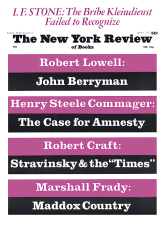This analysis by a former New Haven police chief who lost his job after trying to institute reforms is perhaps more severe and incriminating than the charges of radical critics or liberal reformers. Ahern ridicules the notion that police fight crime or impose law and order. Syndicate crime operating through political machines “virtually makes appointments and promotions in police departments themselves.” The cop’s beat is the lowest rung in a hierarchy of corruption encompassing political bosses, criminals, judges, prosecutors, and the system of patronage which holds the pyramid together. Judges are appointed only after prostituting themselves to political machines, “prosecutors are in…the same position as judges,” and “political bosses control chiefs of police.”
Ahern describes how a New Haven politician offered to bring in “gangland ‘hit men’ ” to put down the 1967 riots in the ghetto on the grounds that “It worked in Newark.” He exposes business thievery as the costliest crime and the least investigated. The policeman is like a janitor: “he sweeps the same drunks and junkies…off the street time after time.” His recourse to standard reform strategy—remove the police from politics by “professionalizing” them—may regrettably weaken the strength of his otherwise very forceful exposé.
[To be published April 20.]
A reliable, not too technical handbook which openly promotes vasectomy as the thinking man’s answer to birth control. Dr. Gillette, a psychologist and author of several other books on related subjects, summarizes the medical facts: sex drive, capability, and pleasure are not diminished; the operation is usually a simple matter of fifteen-minute office surgery (illustrated with step-by-step drawings). Follow-up studies show 98.5-100 percent satisfaction with vasectomy. Gillette handles the difficult question of regaining fertility honestly, noting that available data indicate reappearance of sperm in 88 percent of those vasectomized but that only 14 percent have been able to cause pregnancy (there is a way out, however—the vasectomized male “can hedge his bet by storing his semen in a semen bank”).
Only when dealing with Roman Catholic opposition does Gillette resort to casuistry; i.e., the vasectomized Catholic “may go to confession, repent, and, while remaining sterile, copulate sinlessly for the rest of his life,” whereas those using other forms of contraception commit mortal sin with every sex act. Gillette also provides several testimonials from those who have undergone the operation, including a Foreword by Jim Bouton the former baseball player (he advocates pushing vasectomy via tax incentives) and an article reprinted from Today’s Health, “A Father Tells of His Vasectomy.” A directory of services and clinics in the US is appended.
London rogues and malefactors from the sixteenth through the nineteenth centuries fascinate Mr. Rumbelow, a London bobby who has written the history of the local police force. Before 1829 and the advent of “Peel’s Bloody Gang” they were certainly not London’s finest; often “it was very difficult to distinguish the thief from the policeman” and particularly during the eighteenth century when Jonathan Wild, “Thief-Taker General of Great Britain” (on whom Fielding’s novel was based), ruled the London underworld employing thousands of crooks (including constables) to stock his “Lost Property Office”—an operation that makes John Gay’s Macheath look like a bumbling amateur.
Though nominally intending to write the convoluted (and corrupt) administrative history of the force within that one square mile of central London known as “the City,” Rumbelow in fact does much more: using police dossiers he reconstructs the brutalized lives of the substratum of beggars, pickpockets, ladies of the evening, “shofulmen,” and “swell mobsters” who overran the inner city. The frustration of police reform and resistance to a professional constabulary are scrutinized in detail as an expression of the Englishman’s traditional mistrust of centralized police authority. Abetted by patronage, venality, and jealously guarded civic liberties, the pre-Peelite cops were ineffectual, underpaid, and despised. How they made ends meet by consorting with their adversary/allies, the offenders, is an interesting if not exactly edifying story.
The history of US involvement in Laos (1954-71), admirably documented and with an interpretation that emphasizes bureaucratic strains, conflicting career interests, and uncoordinated policies. Stevenson sees the war as a series of intricate blunders—the result of ideological prejudice and Washington’s distorted image of the situation. The civil strife among Laotians was an ethnic struggle conducted with political labels which the US misjudged: “The roots of the American failure in Laos lie in…the obsessive anti-Communism which prevented adjustments to…political realities.” Decisions were made outside the public view and they were the wrong ones: “The US tended to side with those most willing to use the rhetoric of anti-Communism rather than those most likely to strengthen…the Laotian political system.”
Stevenson covers the surreptitious mechanisms of economic and military intervention in great detail, e.g., which factions the CIA and State Department were backing at which moment (sometimes opposing ones) and how aid funds were used to support them. He attributes the origins of US policy to nebulous “career policy-makers,” “bureaucratic roles,” and “conflicting instructions,” etc. This is one of the best accounts available on the cast of characters and the events of this war.
Advertisement
(Notice in this section does not preclude review of these books in later issues.)
This Issue
April 6, 1972



